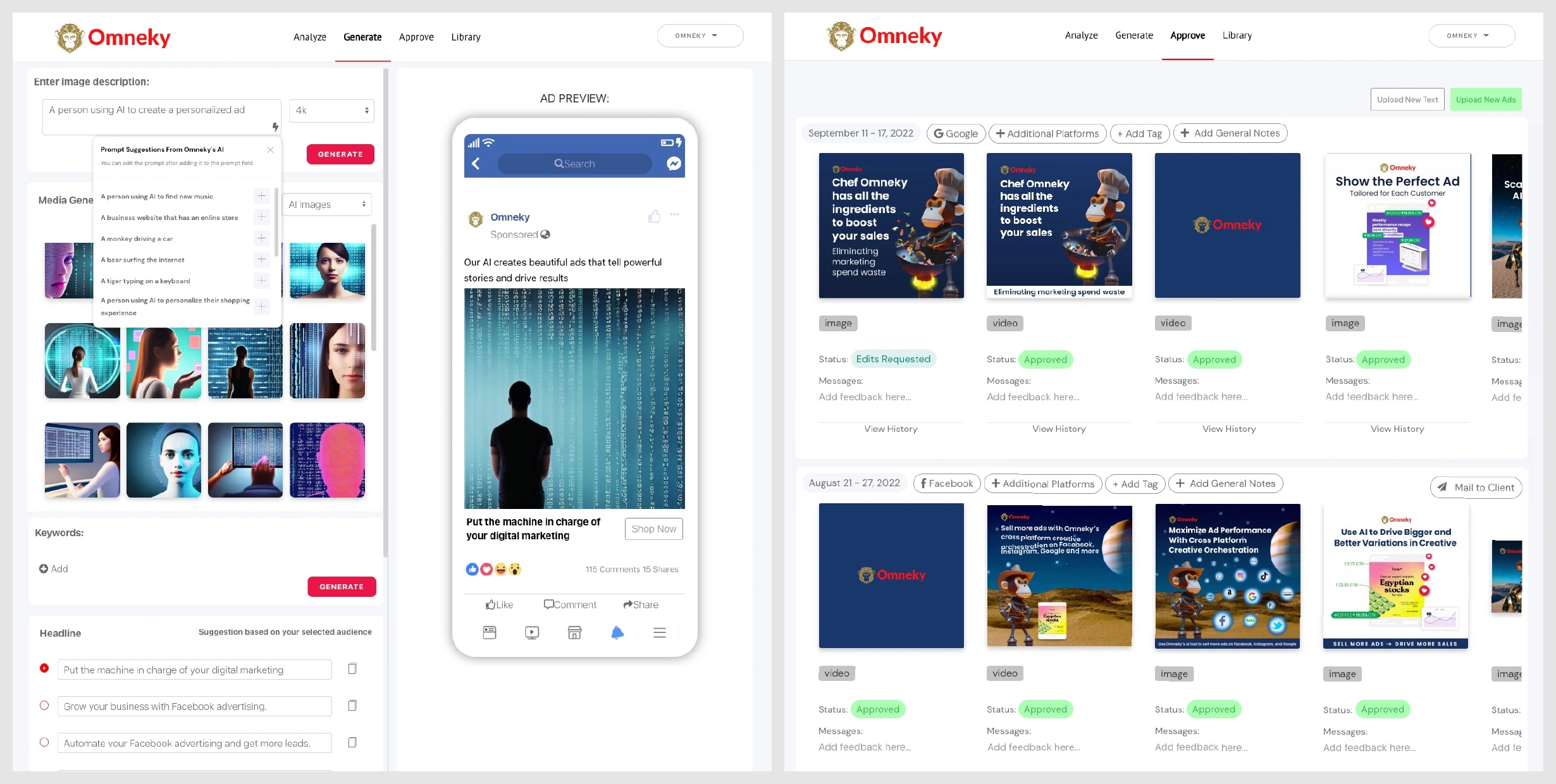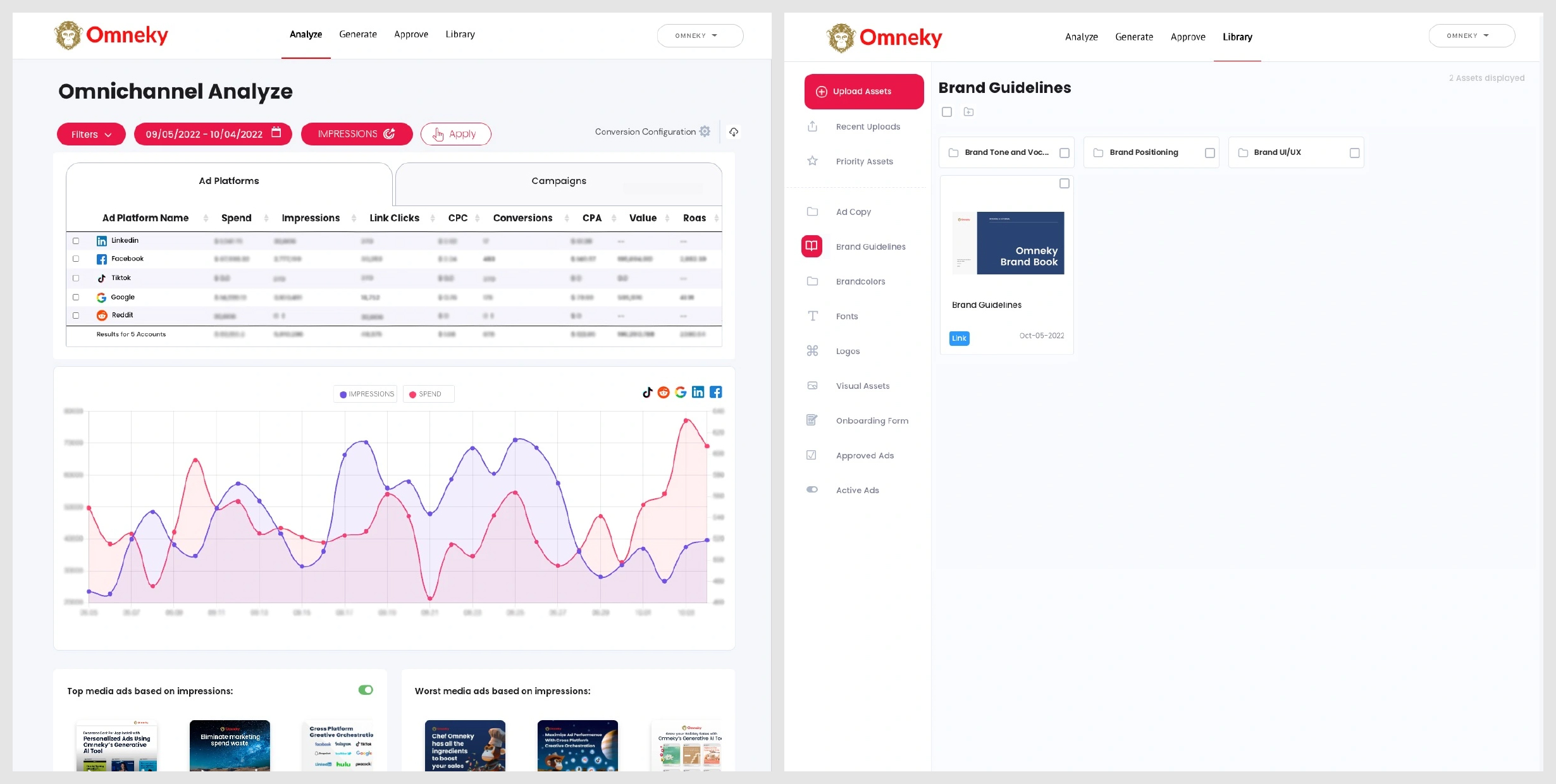Meet Omneky, a startup that leverages OpenAI’s DALLE-2 and GPT-3 models to generate visuals and text that can be used in ads for social platforms.
The company wants to make online ads both cheaper and more effective thanks to recent innovations in artificial intelligence and computer vision. Omneky is participating in Startup Battlefield at TechCrunch Disrupt 2022.
While many fields have been automated in one way or another, creating ads is still mostly a manual process. It takes a lot of back and forth between a creative team and the person in charge of running online ad campaigns.
Even when you manage to reach a final design, the new ads might not perform as well as expected. You often have to go back to the drawing board to iterate and create more ads.
Omneky aims to simplify all those steps. It starts with a nice software-as-a-service platform that centralizes all things related to your online advertising strategy.

After connecting Omneky with your accounts on Facebook, Google, LinkedIn and Snapchat, the platform pulls performance data from your past advertising campaigns. From this analytics dashboard, you can see how much you’re spending, how many clicks you’re getting, the average cost per click and more.
But it gets more interesting once you start diving a bit deeper. Omneky lists your top-performing and worst-performing images and text used in your ads. Customers can click on individual ads to see more details.
Omneky automatically adds tags to each ad using computer vision and text analysis. The result is a dashboard with useful insights, such as the dominant color you should use, the optimal number of people in the ad and some keywords that work well in the tagline.

This data will be used to generate new ads. Customers write a prompt and generate new visuals using DALLE-2. Omneky also helps you with those prompts as it also uses GPT-3 to generate prompts based on top-performing keywords from past campaigns.
Customers then get dozens of different AI-generated images that can be used in online ads. Similarly, Omneky can generate ad copy for the text portion of your ads.
If you have a strong brand identity, Omneky can take this into account. On the platform, customers can upload digital assets and historical ads so that the platform acts as the central repository.
“Customers can upload the brand guidelines, the font, the logo. All of this is integrated into our AI to generate content that is on brand,” Omneky founder and CEO Hikari Senju told me in a call before TechCrunch Disrupt.

Image Credits: Omneky
Of course, some images and text don’t work well for one reason or another. That’s why Omneky doesn’t run any ad campaign without the customer’s approval. Team members can add comments, provide feedback and request approval from the platform directly.
As soon as customers approve a new ad, it is automatically uploaded and displayed on social platforms — Facebook, Google, LinkedIn and Snapchat.
After that, you are back to square one. You can track the performance of your new ads from the analytics dashboard, iterate and improve your ad performance.
The company charges a subscription fee that varies depending on the number of integrations with social platforms that you want to use. Omneky’s long-term vision expands beyond advertising.
There’s a lot of data involved with online ads, that’s why it’s easy to automate some of the steps needed to run an online ad campaign. But the startup thinks it could apply the same methodology to other products, such as AI-generated landing pages.
If you extrapolate even more, it’s clear that AI-generated content will cause a revolution in the martech and adtech industries — and Omneky plans to participate in that revolution.
Feature Image Credit: Omneky
By Romain Dillet




